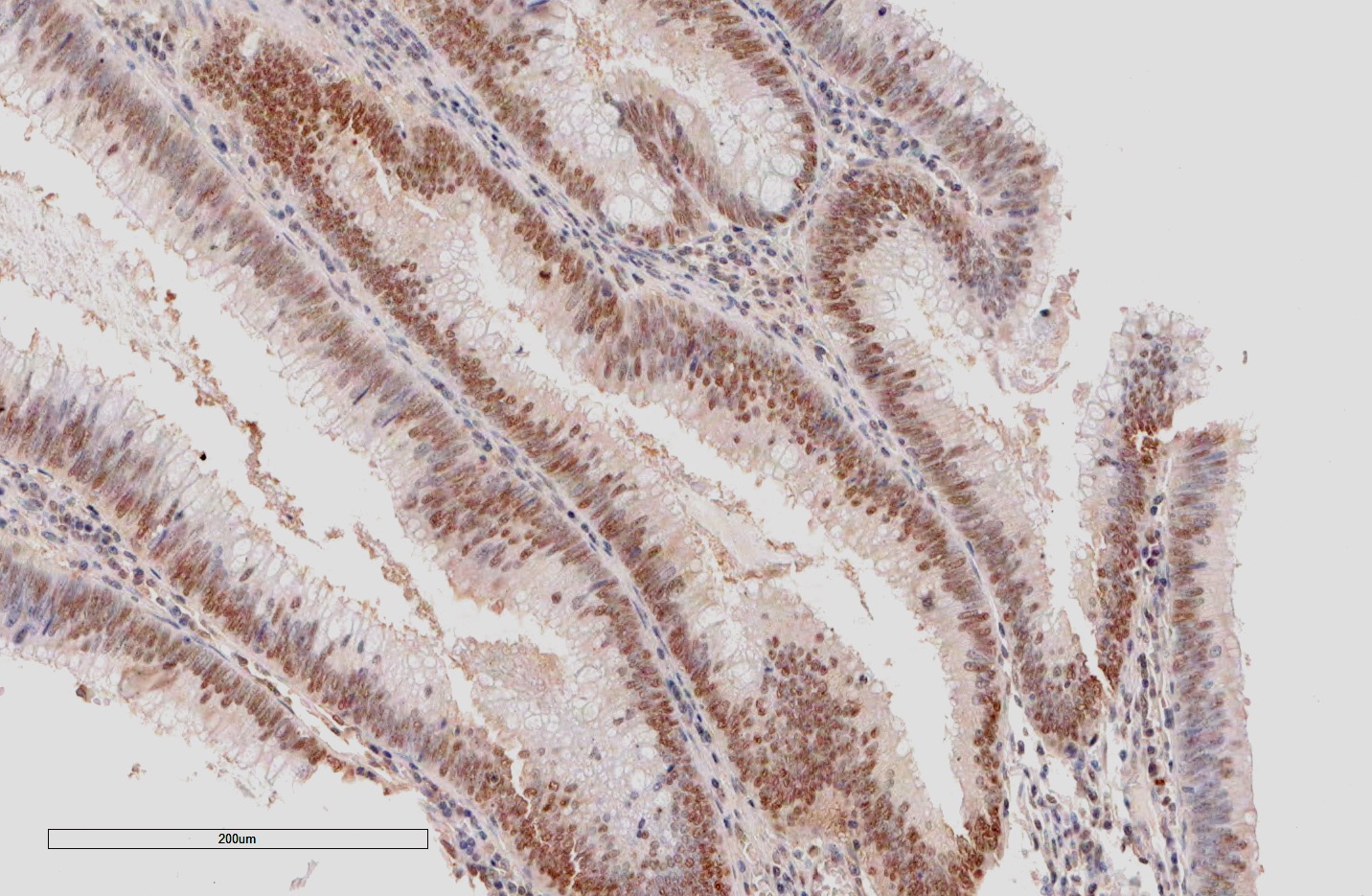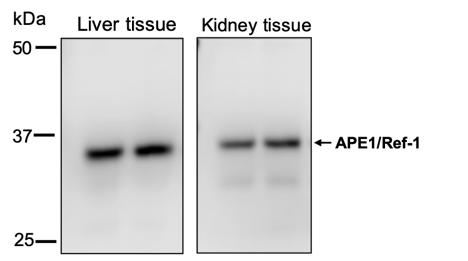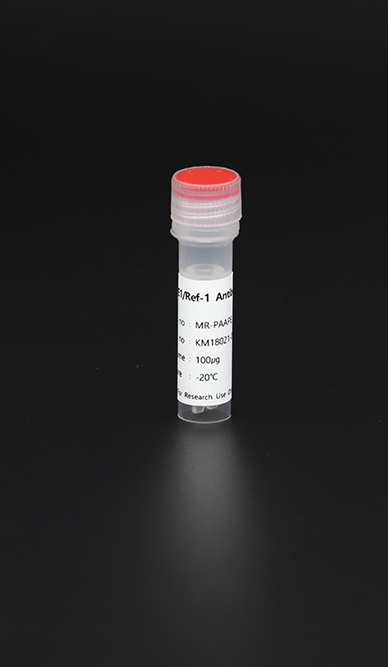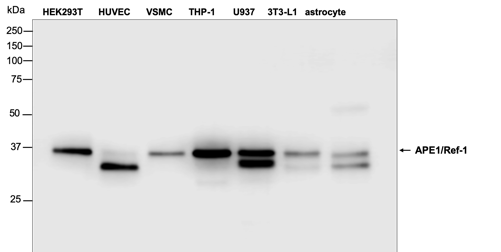ANTIBODY
Apurinic apyrimidinic endonuclease 1/Redox factor-1 (APE1/Ref-1) is a multifunctional protein; its N-terminal region is involved in redox activity and regulates multiple transcription factors, and its C-terminus is involved in base excision DNA repair activity. APE1/Ref-1 is mainly localized in the nucleus and shows dynamic shuttling between the nucleus and cytoplasm in response to various stress stimuli. Recently, it have a reported the possibility for the extracellular secretion of APE1/Ref-1. Elevated level of APE1/Ref-1 were observed in the blood of endotoxemic rats, and in bladder cancer.
| Protein name | APE1/Ref-1, APEX1, APE1, Ref-1 |
|---|---|
| Cat.No | MR-MA14 |
| clone | 14E1 |
| Species reactivity | Human, mouse, Rat |
| Size | 100µg |
| Concentration | 1mg/ml |
| host | Mouse |
| Immunogen | Full-length, Recombinant human APE1/Ref-1 protein |
| Conjugate | Unconjugated |
| Form/ storage solution | Liquid, 0.05% sodium azide in PBS |
| Molecular weight | 36.5 kDa |
| Purification | IgG purified |
| Storage | Shipped at 4°C. Upon delivery aliquot and store at -20°C Avoid repeated freeze / thaw cycles |
| Applications | Western blot (WB) IHC-P |
| Price | ₩450,000 (VAT excluded) |


| Protein name | APE1/Ref-1, APEX1, APE1, Ref-1 |
|---|---|
| Cat.No | MR-PAAPE |
| Species reactivity | Human, mouse, Rat |
| Size | 100µg |
| Concentration | 0.5mg/ml |
| host | Rabbit |
| Immunogen | Full-length, Recombinant human APE1/Ref-1 protein |
| Conjugate | Unconjugated |
| Form/ storage solution | Liquid, 50% glycerol in PBS (pH7.4) |
| Antigen Molecular weight | 36.5 kDa |
| Purification | Antigen affinity purified |
| Storage | Storage : Shipped at 4°C. Upon delivery aliquot and store at -20°C or -80°C.
Avoid repeated freeze / thaw cycles |
| Application | Western blot (WB) IHC-P |
| Price | ₩350,000 (VAT excluded) |


- References
- - Joo HK et al, Free Radic Biol Med. 2019 Aug 1;139:16-23. PMID: 31100475
- - Kim JM et al, J Clin Med. 2019 Aug 1;8(8). PMID: 31375000
- - Lee YR et al, Int.J.Mol.Sci. 2019 Jun 28;20(13). PMID: 31261750
- - Park MS et al, Sci Rep. 2016 Mar 11;6:23015. PMID: 26964514